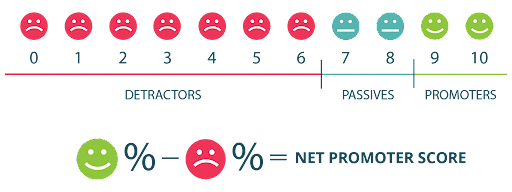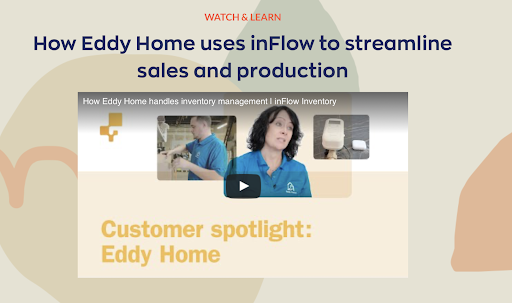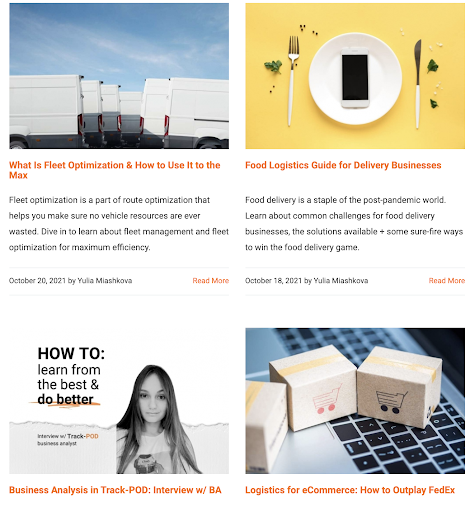No matter what industry you are in and no matter how excellent your products or services are, you will always have angry customers.
Unfortunately, it’s inevitable.
But that doesn’t mean you should sit back and let them be angry.
These “detractors” can potentially damage your brand perception, spreading negative brand awareness to their community.
This has serious potential impacts on your ability to scale and sell.
Thankfully, there are ways you can turn angry detractors into positive brand promoters.
Here are a few key ways to do just that.
Brief Overview: Net Promoter Score
The Net Promoter score is defined as — “An index ranging from -100 to 100, based on the question, How likely are you to recommend this company? In an NPS survey, customers answer with a number on a scale from 0 to 10.”
Customers who give ratings of six or less are marked as detractors, who can potentially tell their friends, family, or social following about their poor experience.
Conversely, promoters score 9-10 on the survey and spread positive brand awareness.
You can calculate your own NPS with the following formula:
The problem is: it is brutally hard to get more promoters. And to make matters worse, you need them. For every angry detractor that leaves a review, there are 26 other detractors, too:
As you can imagine, positive and negative reviews heavily sway both brand perception and spending.
If you notice that you have plenty of negative reviews or press online, it’s time to develop a plan.
It’s more critical than ever to turn those angry detractors into positive brand promoters.
Here are a few ways you can do this right now.
1. Do More Social Listening and Engaging
Currently, over 2.62 billion unique users exist on social media platforms, with Facebook, Instagram, and Twitter dominating the pool:

Customers are constantly posting about their experiences on these social platforms, making them the perfect place to monitor customer engagement.
But the problem is: most people aren’t directly tagging brands when they complain.
To combat this, you need to search for more than just your mentions. One great way to do this is by using Google search operators. With search operators, you can locate tons of brand mentions on social that aren’t directly tagging your brand, too:
Twitter.com + “brand name”
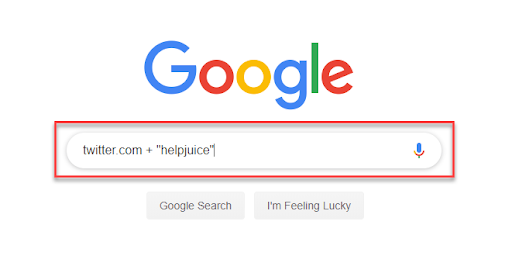
This will return results of people mentioning you on Twitter without tagging you.
Start engaging with people on social media. Build a foundation of trust and fast responses.
Nothing is more frustrating for a consumer when companies fail to respond to them. This only creates a further negative experience and increases the chance of them negatively posting in the future.
Social media should be a big part of your brand engagement strategy beyond just posting company updates.
While company updates and sharing your latest blog post is fine, content like that is down 50% in engagement.
It’s oversaturated and old.
Now, social media is much more about authentic brand interactions. Engage with your customers, share user-generated content. Be real with your followers and they will in turn become more loyal brand advocates.
2. Respond to Customer Complaints Faster
A recent study showed that 60% of consumers feel that companies aren’t responding to their concerns and complaints.
Timely responses to customer queries leads to good customer experiences.
If you aren’t responding fast enough to customer complaints, it has a two-fold downside:
Nobody likes to see negative comments on Yelp or Google Reviews. And it’s even worse to see them with zero responses from the company in question.
It tells customers that they simply don’t care, even if that’s not the case.
Make sure you have a full-time employee monitoring customer service channels. This includes everything from social media to Yelp to Google Reviews and everything in between.
If you don’t, consider hiring a virtual support assistant. There are plenty of sites like Fiverr and UpWork where you can find great, cheap assistance for your business:
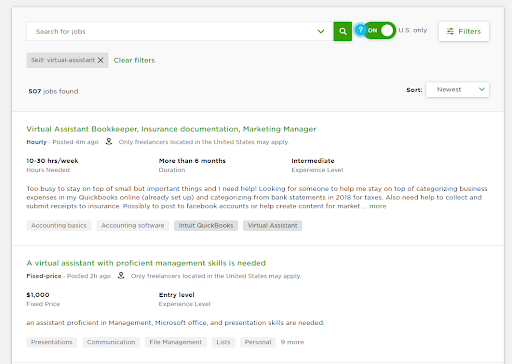
In today’s service-oriented consumer market, you literally can’t afford to respond slow (or not at all) and can be an impediment to your growth The team at Solitaire Bliss, for example, began using a virtual assistant to reduce their customer service response time to under an hour. Not only did their NPS increase by 10%, but the referral traffic to their solitaire games increased by 15% as a result.
In some cases, your response to negative reviews will serve as a way to prevent losing future customers rather than recovering the service for an angry customer.
The Motley fool reviews allow potential customers to decide whether their subscription service is worth the price. In this instance, a customer left a negative review and unsubscribed.
While it is unlikely that this customer will resubscribe, Motley Fool’s response to the review provides solutions and explanations to new and existing customers to prevent them from facing the same issues.
3. Implement Customer Feedback
It’s tempting to just tune out customer complaints and treat them as a few bad apples in the bunch.
But more often than not, potential angry customers have great feedback that can help you refine your product or service.
And not listening to them would be a huge mistake.
Because they are on the outside looking in, their feedback may fix things that you potentially hadn’t thought of.
For instance, check out this interaction between United Airlines and a customer regarding the in-flight food service:

Instead of brushing the customer off as being picky, they genuinely appreciated the advice and internally reviewed it, working to improve the service going forward.
This both benefits you and the customer. Another great example is highlighted in this interaction between Slack and a customer:

Because your customers are entrenched in your business daily and have diverse use-cases, they can find potential pain points that you normally wouldn’t perceive as a pain point.
Encourage customer feedback and assure them that you are implementing the fixes.
After collecting your customers feedback, make sure to showcase them on your website using web video production, this will definitely help potential customers to subscribe to your service. A great example is how inFlow is doing on its website.
4. Fix The Problem Or Offer Incentives
As a growing company, it can be hard to take a loss on certain things, especially paying customers.
But if there are no other viable solutions, it only makes sense to fix the problem via compensating the user for the errors made.
Offering incentives or fixing the problem is a great way to please angry customers and keep them loyal for years to come.
And these don’t have to be huge, major investments. A simple free month of service or small discount could do the trick.
The key here is that you are working to solve the problem for the customer, and are taking initiative.
This also shows future / potential customers that your customer service is trustworthy and impactful should they ever have problems.
5. Personalize The Content You Send Them
Nothing is worse than un-personalized content marketing, both via customer service and general company content, like a newsletter.
81% of consumers state that they want brands to better understand their needs, wants, and pain points.
75% of consumers stated they were “much more likely to buy” from businesses who personalized the content they received.
With millions of blog posts going up daily, it’s no wonder consumers are craving personalized content: the market is saturated.
Try using more visual, customized graphics in your email marketing that are custom-made for specific audience segments:
Personalization is an effective way to reduce your customer acquisition cost. You can retarget your existing customers for additional products and services by personalizing the content you send them.
Using tools like Grammarly, you can customize both the tone and style of your copy to personalize the messaging even more:

If you are still sending generic content to customers via your newsletter or blog, you need to re-evaluate. Providing better content and speaking to customers in their language can improve the user experience and turn angry customers into happier advocates who continue to come back for more.
For example, Track-POD has a blog full of advice in different categories for their clients or potential customers.
Conclusion
Angry detractors have the ability to spread harmful information about your brand.
Reviews are one of the biggest sources of trust and authority, and negative reviews can tank your sales.
It’s imperative that you manage detractors and turn them into brand promoters instead.
Follow the tips in this post to stay on top of brand mentions and keep your brand perception in good favor.

